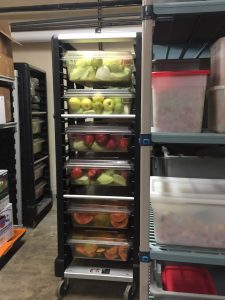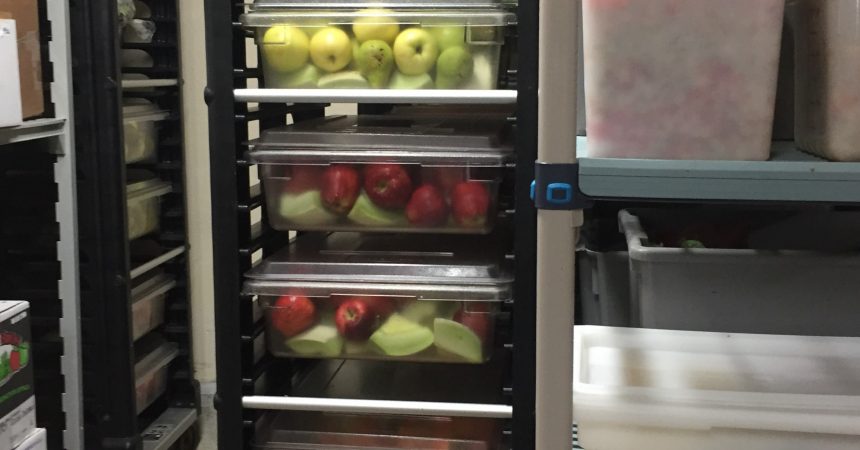Zoo InternQuest is a seven-week career exploration program for San Diego County high school juniors and seniors. Students have the unique opportunity to meet professionals working for the San Diego Zoo, Safari Park, and Institute for Conservation Research, learn about their jobs, and then blog about their experience online. Follow their adventure here on the Zoo’s website!
 Today we visited the Forage Warehouse and met Deborah Lowe, Nutritional Services Supervisor, and Katie Kerr, Associate Nutritionist at the San Diego Zoo. The Forage Warehouse is essentially the kitchen and pantry of the Zoo, and contains all of the stored animal food as well as machinery and space to prepare it. The warehouse contains food for all species, from fruit and mealworms for birds to whole rabbits for the Zoo’s carnivores.
Today we visited the Forage Warehouse and met Deborah Lowe, Nutritional Services Supervisor, and Katie Kerr, Associate Nutritionist at the San Diego Zoo. The Forage Warehouse is essentially the kitchen and pantry of the Zoo, and contains all of the stored animal food as well as machinery and space to prepare it. The warehouse contains food for all species, from fruit and mealworms for birds to whole rabbits for the Zoo’s carnivores.
Ms. Lowe’s job as the Nutritional Services Supervisor is to oversee the preparation and organization of the diets and enrichment items of every single animal in the Zoo’s collection. The forage warehouse includes a produce refrigerator, meat refrigerator, meat freezer, and fish freezer. The produce and fish are restaurant-quality and is from the same source as the produce that is farmed for human consumption.
Ms. Lowe must proceed according to the animals’ specific meal plans, which are formulated by Dr. Kerr. Dr. Kerr’s job pertains to the long-term planning necessary for a healthy diet for every animal in the Zoo. She must make sure that all of the dietary needs of the animals are met, including calorie needs, ideal protein-to-fat-to-carbs ratio, vitamins and minerals, variety, and palatability.
To contribute to conservation efforts, Ms. Lowe and Dr. Kerr must make sure that they are not wasting any resources. They make sure not to overfeed the animals, unless it is a situation such as in the aviaries in which there must be enough food that there is no competition between birds. The Zoo also makes an effort to compost any organic materials, creating rich soil that can be used for the Zoo’s many species of plants.
These ladies must also make sure they are feeding all of the animals a healthy diet so that they can be as healthy as possible for research and breeding programs. Healthier adults will produce healthier offspring, which must eventually also be brought up on solid food, so everyone at Nutritional Services must be on top of their jobs. With Dr. Kerr formulating the animals’ meal plans responsibly and Ms. Lowe rigorously preparing the food, improper diet is the least concern for breeding animals.
You can contribute to conservation of local species by avoiding feeding wild animals (including by accident – make sure everything is bear-tight!). Many campers do not understand that feeding wild animals is not good for them in the long run, as they become dependent on human sources of food, which can often lead to wild animals wandering into densely populated areas. Here, they can be hit by cars or come into conflict with house pets. With larger and more aggressive species such as bears, it is extremely common for animals to be euthanized by Fish and Wildlife Services once they are seen frequenting human habitat and declared a threat.
Sage, Conservation Team
Week Four, Fall Session 2017


